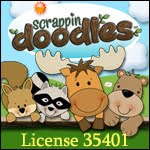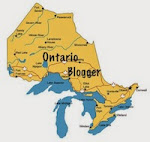Possible Sentences- Pre-Reading Strategy
- adapted from Mastering the Art of Effective Vocabulary Instruction, Adolescent Literacy- Turning Promise Into Practice, J. Allen, p. 87- 104
- when students have prior knowledge of the vocabulary [in a unit] this strategy “gives students the immediate opportunity to use their knowledge of [the] words to predict possible sentences they will find when they read” (Allen p.99)
Steps:
1. Students should have some knowledge of the words they will be using for Possible Sentences. Teachers could use the Tea Party (When Kids Can't Read by Kylene Beers) strategy to introduce the words to the students. Perhaps a Word Sort would work for younger students, or you could use the content area words as spelling words prior to using this strategy so the students have some familiarity with them.
2. Teachers create a list of important vocabulary words from the reading text or unit of study. This strategy works best for non-fiction or in the content areas. I don't know that is necessarily true now that I think back... there are often words in fiction texts that are new to students, or you could words that relate to the theme of your reading, perhaps character traits of the characters in the book would work as well!
3. Students are given the Possible Sentences worksheet with the list of vocabulary words and space to create their sentences.
4. Students choose 2 or more words to write in a sentence predicting how they think those words will be used in the context of their reading. No matter what age students will need you to model this for them, even Grade 8's!! The idea is not to write the definition of the word but to use it correctly in the context of another word on the list.
5. Teachers can ask the class to share their “possible sentences” orally, or record on chart paper/overhead.
6. Students then read the assigned text. As they read they check their predicted sentences against the content of the text. This should be done as a class with younger students.
7. If their predictions are accurate in terms of context (not word-for-word) students highlight the sentence with a check or a circle.
8. If the sentence is inaccurate, students then revise their sentences for accuracy in terms of the text.
Here is an example that I have used in my Grade 8 Geography class for our Economics unit.
The students were given these words (terms):
economic activity
...and they were asked to make sentences that show how 2 or more words relate to each other in a sentence.
1. Economic activities involve the production and distribution of goods and services.
2. Society is required to make decisions about how technology should be used.
After the students have spent some time studying the content they can go back and check how right they were with their possible sentences, or correct any misconceptions they had before starting. Just wait, you'll be surprised at how profound some of the student's sentences can be.
I think this strategy would be very interesting to use in the younger grades. I have had much success with it in my Grade 7 and 8 classes and am looking forward to bringing it to my Grade 4 class in the fall.
Here are some ways I may use it in my class next year:
- character education words
- key words from math word problems
- reading strategy words
- social studies or science content
- new vocabulary found in a picture book, novel study, reading text
HOW WOULD YOU USE IT?





















